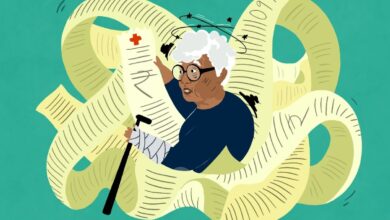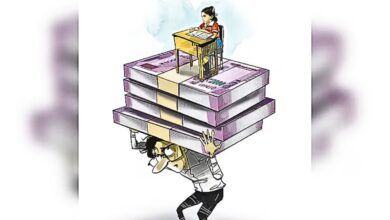Whats JOURNALISM serving us??
Media is considered as the fourth pillar or fourth estate of democracy. The term fourth estate refers to the press and news media, as it has ability to frame issues of the day. Politically as well, it possess the power to bring change in the policies of government, as it generally challenges significant powers which can bring the light of social change. Nation has been divided into 3 pillars: The Legislature, the Executive and the Judiciary. Then there come the fourth pillar, the Media. The main purpose of this fourth pillar is to balance every disturbed equilibrium of society that is to verify and interrogate the matters of governance, public matters as well as commercial ones which are connected directly or indirectly to and by the people. For the press, it is vital to present neutral, objective and critical analysis of news to the people. We as people or citizens are always biased by the opinions. Even our politicians are biased by their political agendas and ideologies they hold. So for press, it is their professional need to serve truth to the people. Unlike judiciaries, they don’t have this luxury of being biased.

The term Fourth Estate or fourth power refers to the press and news media both in explicit capacity of advocacy and implicit ability to frame political issues. Though it is not formally recognized as a part of a political system, it wields significant indirect social influence.
On 26th November, 2019 a media house came up with a news story telling about how BJP loses another state Maharashtra from its hand in the election. Media being a real influential media is expected to narrate news or facts in a manner that maintains the peace and harmony in the nation. But instead of just stating the fact and just awaring people about the same, it chose to use the dividing mentality of the citizens to attract more attention.

According to this, BJP which was very successful in spreading the color of “hindutva” i.e. orange across 71% of the nation at state level in 2017 has step down the game by 40% in 2019.It could have been a clear news excluding the religion sensationalisation by just stating out the facts and stats of the party’s performance.
During some online research, there was an article which popped out stating that “Hours before lockdown, Modi asked print-media owners, editors to refrain from negative COVID coverage” Where the PM asked the print media to become a bridge between the government and the citizens by spreading optimism about the pandemic which will be handled smoothly by the government over a video conference where The owners and editors represented media organisations working in 11 different languages, including the senior-most members of national media houses such as the Indian Express Group, the Hindu Group and the Punjab Kesari Group were present. As per the request of the PM, next day almost every media house obeyed the request by publishing positive stories about the pandemic. But the question arises is media just a puppet of the government? No. None of the media organsations came up with the critical analysis of questioning the steps taken by the government. Concerns like poor planning and disastrous implementation of the lockdown, or the government’s failure to prepare for the pandemic, such as stockpiling crucial medical equipment for the healthcare workers despite early warnings by the World Health Organisation.
On 24th of February, 2019 Donald Trump landed in India first heading to Ahmedabad where he visited the Sabarmati ashram and then Motera stadium, for the “Namaste Trump” event. The president of the United States later visited the Taj Mahal and then flew to Delhi. But on the same day deadly protests that have continued to engulf India’s capital, as Muslim and Hindu groups clashed violently and the death toll rose to 13. It left the streets of north-east Delhi in flames and continued to escalate on Tuesday, has so far left one policeman and 12 civilians dead, and over 150 injured. But the media coverage of Trump’s visit throughout the day was non-stop. Most of the newspapers front page just had the story of Trump’s visit. The thought which triggers is- was the case of Delhi violence of any less importance?
Then comes the other interesting part of journalism, the Yellow Journalism.
what is that?
Originally, newspapers were the source of news, information about the goings-on; long before radio and television were invented. In order to be successful in the newspaper business, publishers started to opt new methods to attract their readers. This was the beginning of yellow journalism in the late 1800s, it flourished because publishers saw an opportunity to increase their profit value. The question became how they would make their newspapers stand out from the crowd and get the lime light. That’s where yellow journalism came got its roots from. In the 1890s, newspaper owners William Randolph Hearst (New York Journal) and Joseph Pulitzer (New York World) came up with the idea to sell their papers putting a loads of exaggeration, melodrama, and even romance. This style eventually became known as “yellow journalism.” Hearst and Pulitzer would exaggerate the actual true events, and weave events that had never even happened, just for more profit. The main aim was to grab the reader’s attention, whether the details being published were actually true or not.
Today, yellow journalism can be seen in grocery store tabloids & news headlines. Typically, if a headline contains an exclamation point, possessing words like “shocking,” “unbelievable,” or “astounding,” then the paper is probably playing its game on the grounds of yellow journalism. The term “yellow journalism” is used in a more negative way to describe any journalistic style that treats real news either unprofessionally or unethically, or that presents information as true, which has no traces of honesty.
Cases that proves its existence…
So here’s a case of National Law University student Pranita’s death which took place in Kumta beach in Karnataka on May 29, 2016. Her death was a normal accident where a snap tide swept her away to a watery grave. But thanks to the media who gave a really unrealistic and false turn to the story by saying “the 21-year-old slipped from the rock while clicking herself”. There were articles claiming she fell 300ft from the top of a lighthouse after she slipped while taking a selfie.
And later on the truth came out from a friend of Pranita who gave a clear statement “she didn’t even have her phone with her. None of us did because we kept them safe in a bag, a feet away. I still have her phone with me”
They created a whole issue out of it calling it a “selfie death” whereas in reality, it was an unfortunate accident. Such irresponsible behaviour by media houses doesn’t only disgusts the viewers, but also aggrieves the already in- grief family. This is a clear example of how the media has crossed its boundaries to the extent of where it is victimizing and being judgmental towards taday’s youth.

Later Pranita’s family, friends and many on social media outraged at the misleading label used to tar their tragedy. Her friends have already used the social networking website Reddit to tell “the real story” of Pranita’s death, forcing almost all news organisations to remove the original version and some to even apologize to the family.
On 21st of October, 2015 a media house its newspaper published a news story claiming that Dalits, that too kids were burnt alive to death by upper caste men. As we all know how our nation has always possessed a brutal mindset for discrimination on the basis of caste. It took years for the country to even partially evolve about the same and this news story is killing the development by the headlines itself.It would have still been granted if the cause of the crime was caste itself. But no. The media house on that afternoon posted a brief detail about the same news story on its online platform where the reason mentioned was the dispute was because of some property. Police inquiries show that a piece of property was the reason for the hatred between them. Clearly, the Dalit and Upper Caste Rajput had no role to play here. The important point is that there was no mention of “property” in the print version.
This shows that how media is deviated from its path ethically.




